
LXP SS Bezel: Creatively Named, Awesome Flashlight
I'll go ahead and say it; I really like buying flashlights from Int'l Outdoor Store. There is a large selection of unique and (mostly) original designs and the recreations are usually better than the "inspiration version." The LXP doesn't seem to be a copy of anything. It reached out to me because of its old school D-size grip, hefty metal around the pill area with plenty of fancy cooling fins and convertible one or two battery versatility. I also like the extra run-time and power of 26650 cells. For the bling averse among us, IO does offer nearly the same torch with a single group of six cooling fins and black crenulated bezel. For an extra $9.95 that particular unit can be optioned with this shiny bezel, bringing its total to $56.93, making it about $3 more than the light shown here with its more ostentatious cooling fin design. It became an easy choice for Foy.
Foyapproved
Bottom line: The obvious comparison in the Foycollection is my similarly sized, E1320 modified Shadow JM05 that pulls around 3.10 amps at the tail. Interestingly, at 2.30 amps (2.80 amps advertised) the LXP reads slightly higher on (the admittedly flawed relative brightness measurement) Foyometer. It does nevertheless, have a tad more output and is one of the prettier cool white tints I've seen. $54 is quite an investment however but you do get a substantial hunk of a flashlight with more than just one battery option. A thick, screw-in brass pill surrounded with lots of heavy cooling, dual red O-rings on all tubes and a collector-worthy stainless steel bezel make this LXP a perfect hand-held lighting tool or shelf queen.
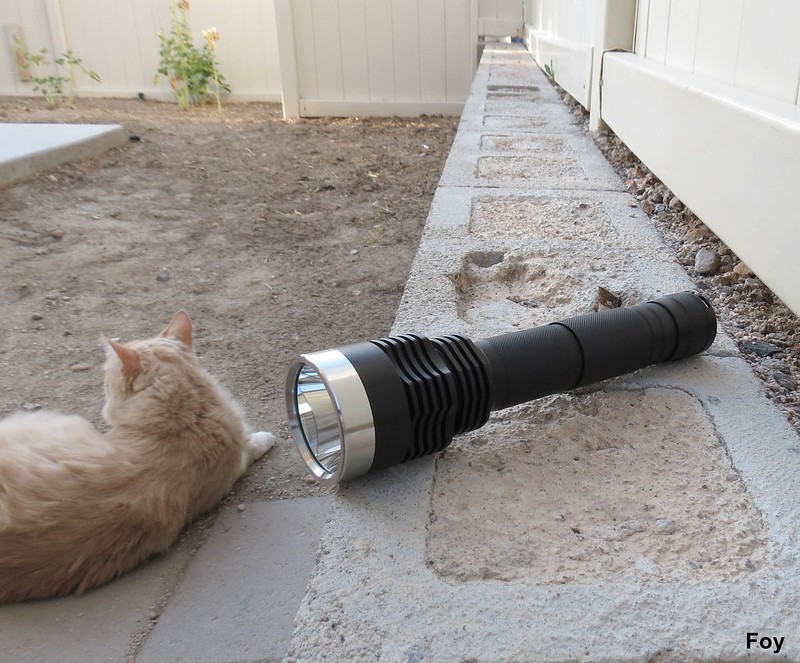 Ted and LXP
Ted and LXP
What I like:
- big hand friendly fat
- large, screw-in brass pill
- beam profile/tint
- output
- battery options
- hidden blinky modes
- dual O-rings (and red too)
- stainless steel bezel
- reflector cooling fins and seating solution
- unique side-tie lanyard holes
- included kit
What I do not like:
- non-matching, larger diameter extension tube
- smooth knurling
- DIY lanyard making project?
- advertised 2.80 amps, 2.30 amps measured
- wish it was the improved XM-L2
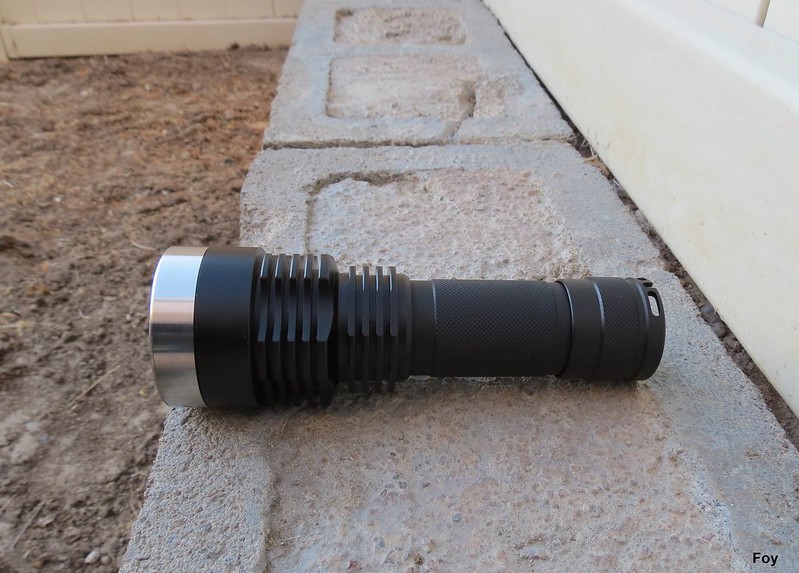
LXP Stainless Steel Bezel 1/2 x 26650 XM-L/U2 (1B) Flashlight
$54.00 Int'l Outdoor Store http://intl-outdoor.com/lxp-ss-bezel-1226650-xml-u2-flashlight-p-519.html
ordered: 4-22-13
received: 5-20-13
Cree XM-L/U2/1B emitter
brass screw-in pill
fully regulated
aluminum SMO reflector
designed for one or two 26650 lithium-ion rechargeable batteries
ascending 3-mode or 5-mode user interface with mode memory:
low (100mA) medium (700mA) and high (2.80 amps) or
low, medium, high, strobe and SOS (hidden modes accessed by activating on low for 3 seconds, light flashes once, quickly turn off and back on)
aluminum alloy construction
"hard anodize" finish
square cut threads
dual O-rings
tail standing, reverse-clicky tail cap switch with GITD 16mm boot
GITD bezel O-ring
waterproof rated: IPX-7 (immersion up to 1-meter)
selected manufacturer specifications:
900 lumens
current controlled circuit (no PWM)
reverse polarity protection
low voltage protection: single cell/3-volts; double cell/5.8 volts
148mm (single cell length) 211mm (double cell length)
31mm (body)
49.2mm (head)
207g (single)
244g (double)
what you get for $54.00
- LXP flashlight
- extension tube
- extra O-rings (4, red)
- assemble-it-yourself lanyard kit
- extra DIY switch
tail cap draw: with 2 x unprotected King Kong 26650 INR
low: .06 amp (.12 to emitter)
medium: .42 (.84)
high: 1.15 (2.30)

Finish is a strong buff black that I'll assume is type II. Gentle rolling on the Foywall had no effect and my only coating complaint (small though it is) would be a slight finish inconsistency on the knurling portion of the extension tube. Mine has a barely visible lengthwise line suggesting sustained rubbing of some kind. I only mention it as a matter of record because it is hardly noticeable.
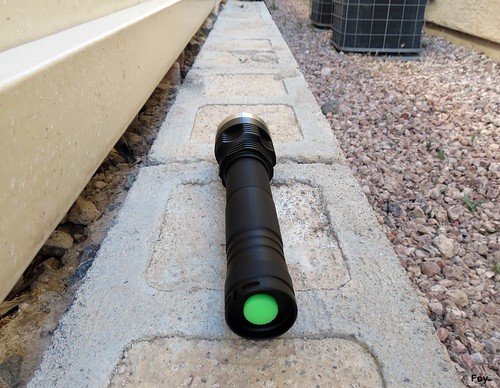
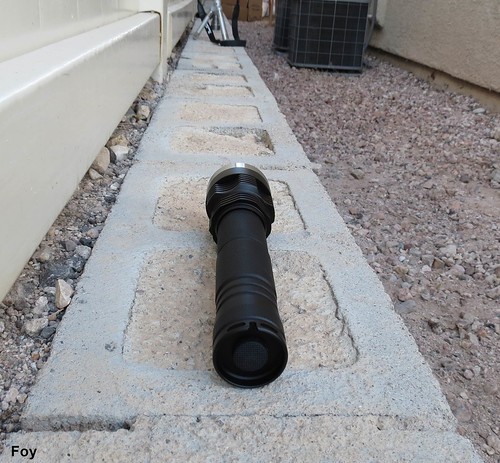
Like its XinTD/C8 order companion, the LXP shipped with a GITD boot that Foy swapped for black.
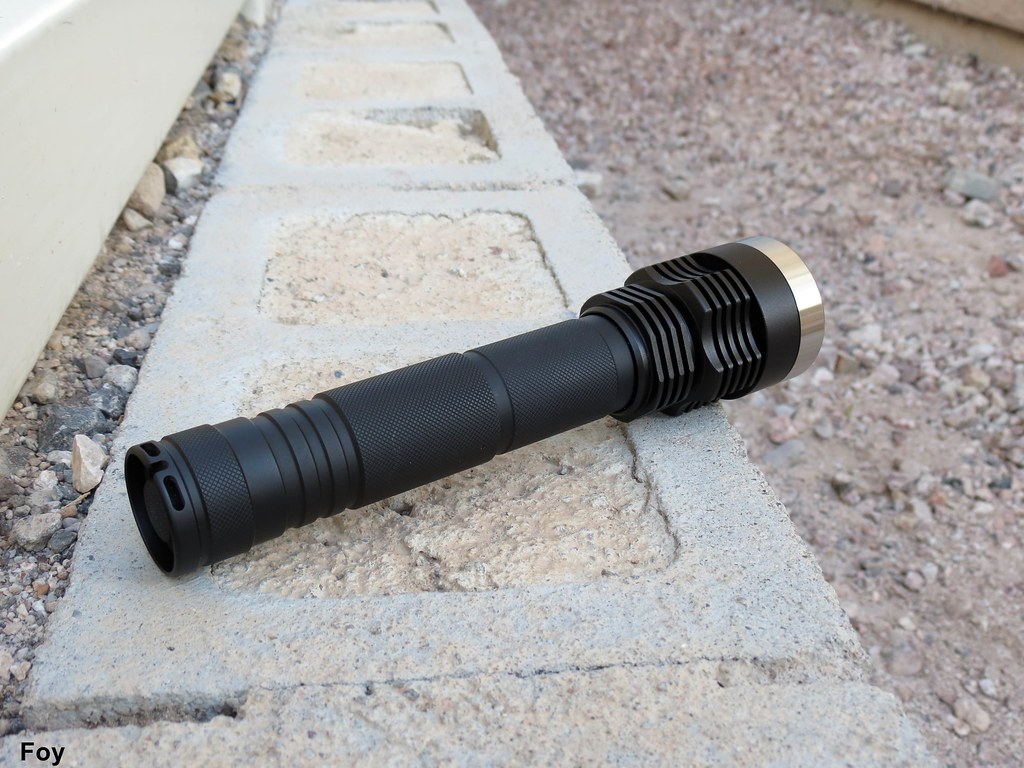
A very attractive torch, well proportioned and high-end in appearance. I like the D-cell feel in my large hand and I listed the knurling as a minus only because I prefer it a bit more aggressive.

My only actual gripe has to do with the mis-matched size of the extension tube. The flashlight body and/or knurling should be same-diameter thicker or the extension tube made flush with some sort of transitional arrangement . . .
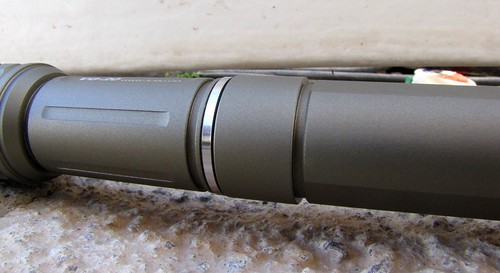
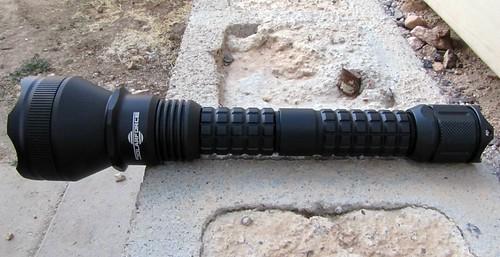
. . . such as one of these. Certainly not even close to being a deal killer but it would have given the light a professional polish in execution.
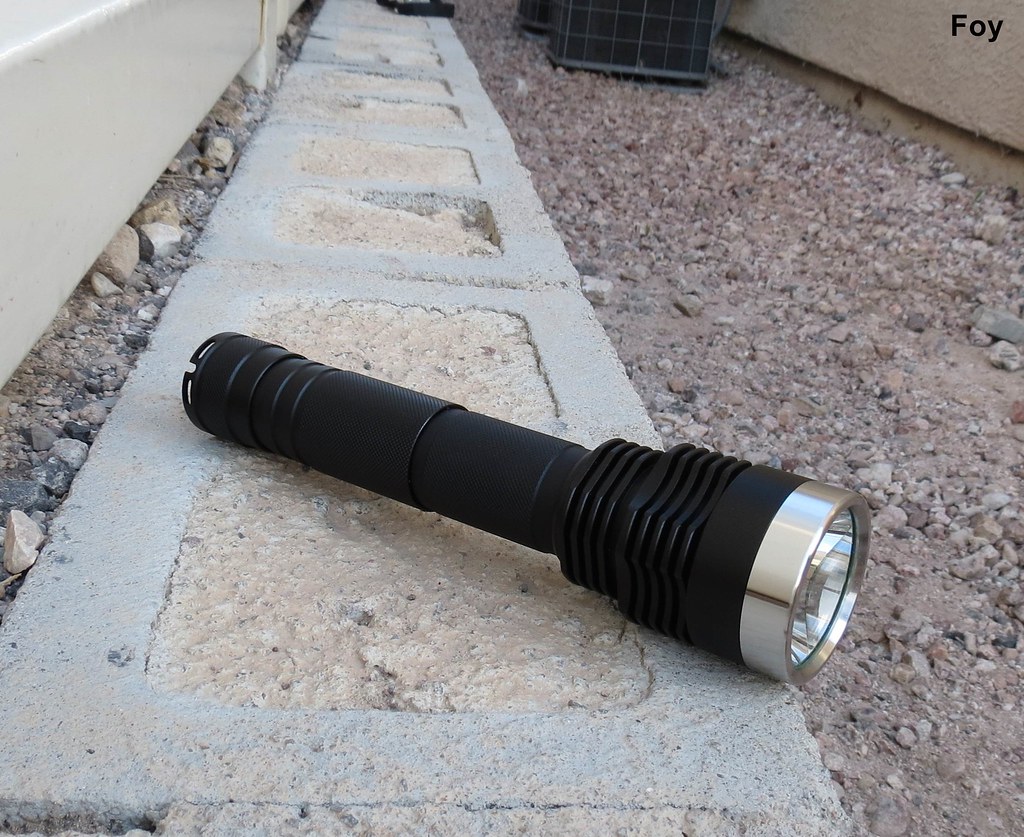
The LXP has 5-upper and 4-lower deep-cut cooling fins; the upper being scalloped on five sides and the lower cut smooth directly below by the same number. Thick area above the fins and below the bezel is just shy of 15mm of smooth aluminum and the heavy brass pill inside threads to exactly the middle of each set of fins. Thermal pathways conducting heat away from the emitter would seem to be excellent.
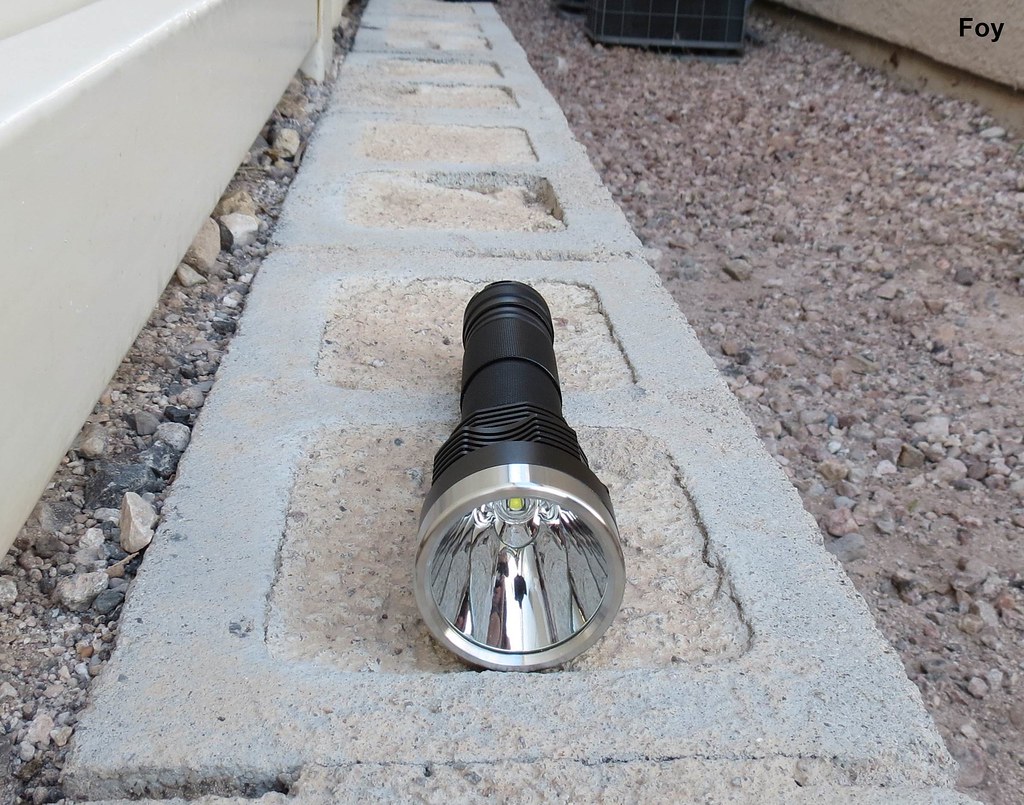
Aluminum SMO reflector is gorgeous and emitter is perfectly centered.
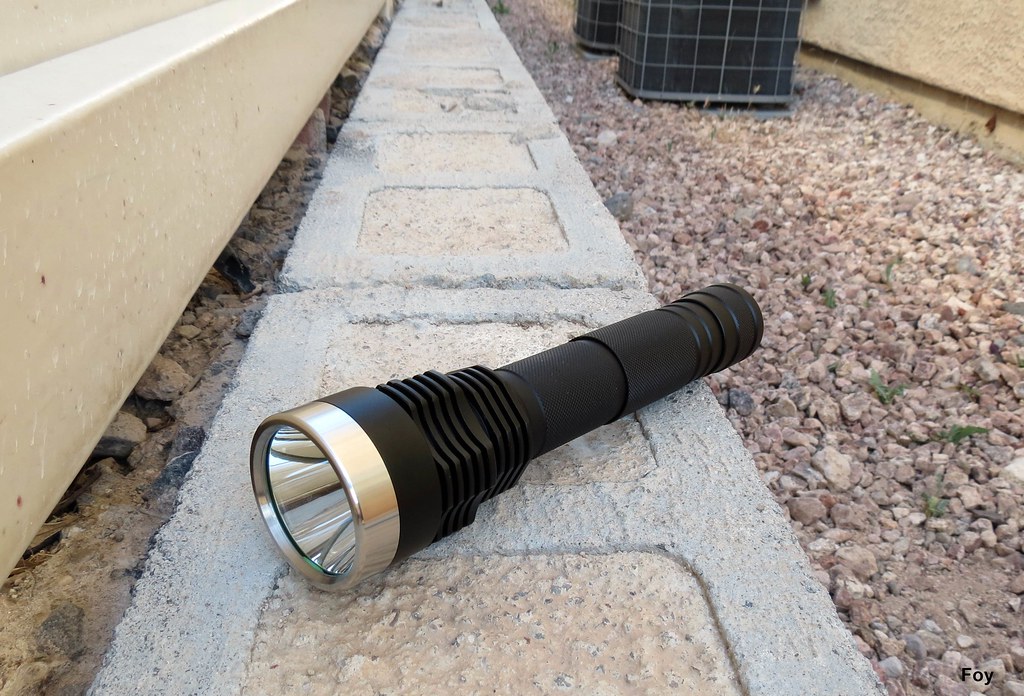
I didn't notice the improperly seated bezel O-ring until I uploaded this picture. The GITD O-ring fits easily in the inside groove of the bezel and when threaded on slowly, seats perfectly.
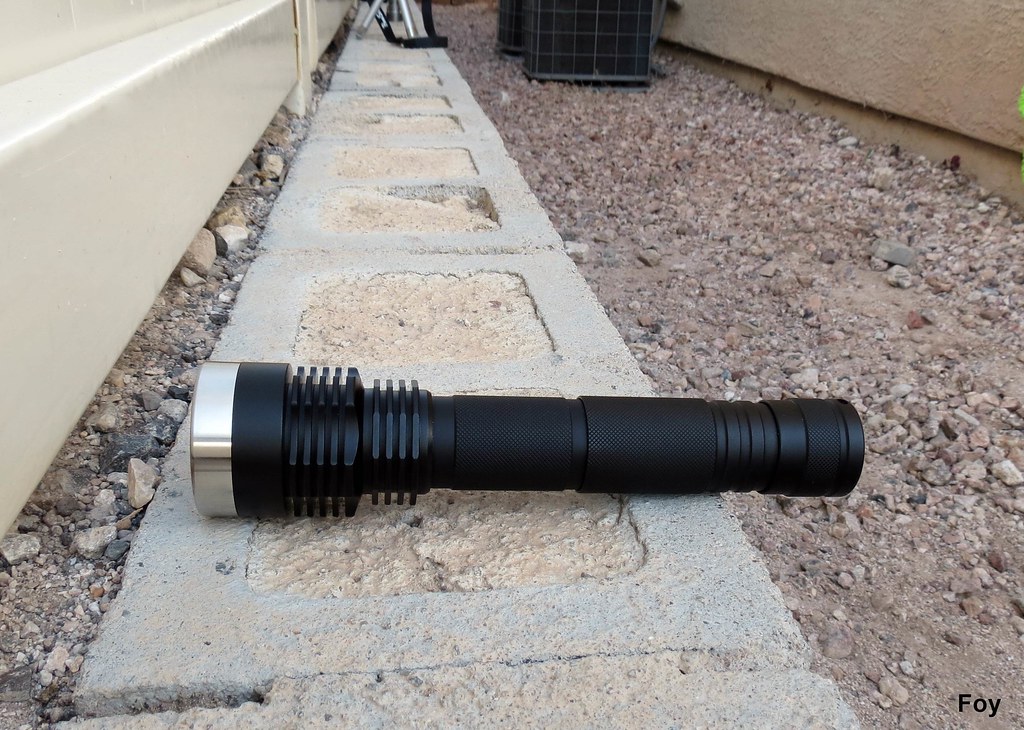
You can see how deep the fins are cut in this shot. Light is rated IPX-7 which is down to 1-meter. In the shower with Foy and there was no ingress.
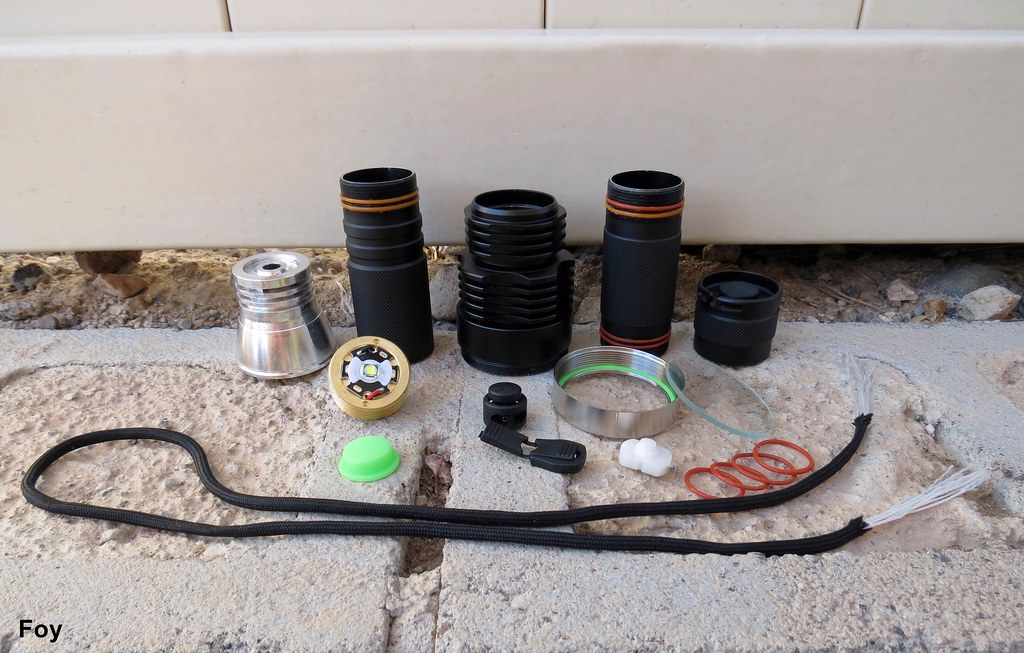
The LXP is a quality package all the way through but one must question the granddaughter-craft-projectesque inclusion of a DIY lanyard kit. Amusing rather than annoying and the different orange O-rings seen installed here are simply because Foy prefers a bit more resistance when threading on components.
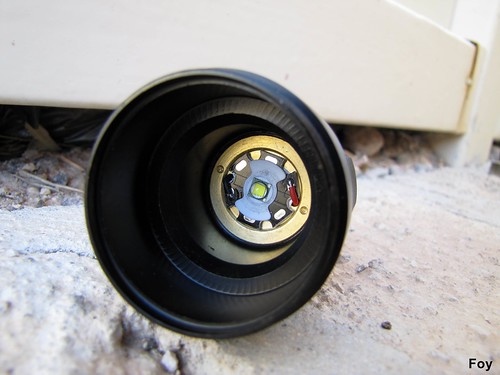

Brass pill threads in all the way through with no stop. To achieve proper depth, install reflector, lens and O-ring (inside bezel) and tighten bezel completely. Then, thread pill until snug against wide outer ring of reflector. Rather than just the center opening of the reflector coming into contact around the emitter, you can appreciate the thoughtful design of having the reflector also seat around its outer edge against the top locking ring of the pill . . .
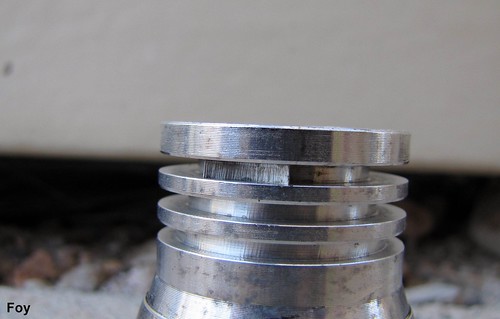

. . . and the inclusion of cooling fins around the base of the reflector. And, apparently, leftover material from its time on the lathe. (shaving lifted right out with tweezers)
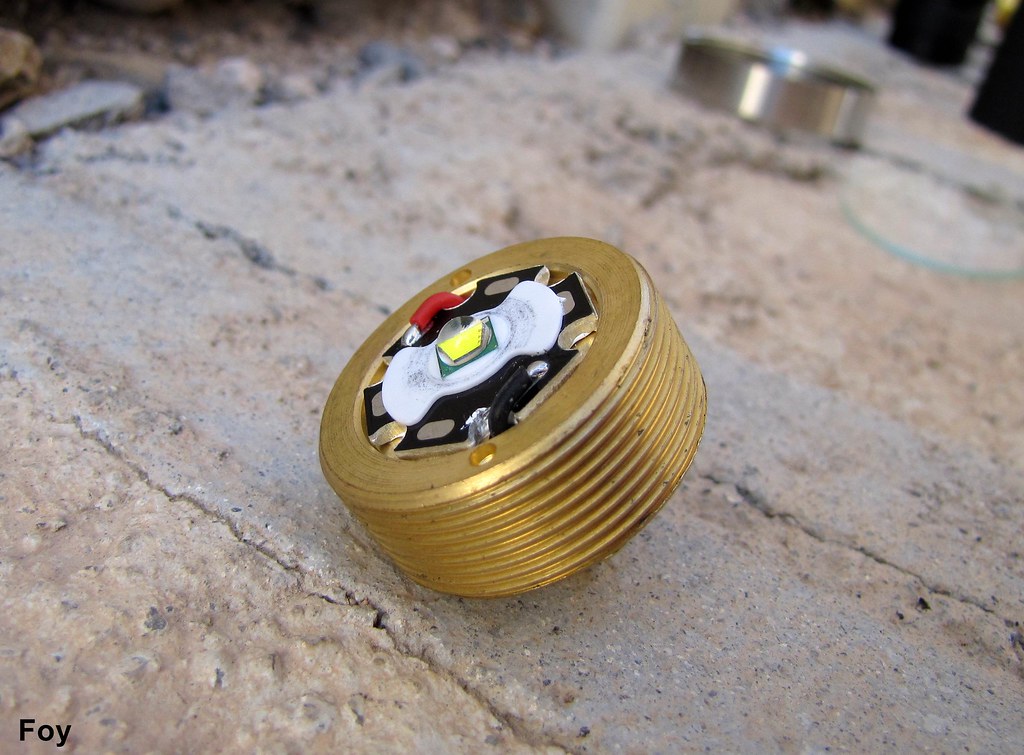
This is the kind of pill a flashaholic likes to see . . .
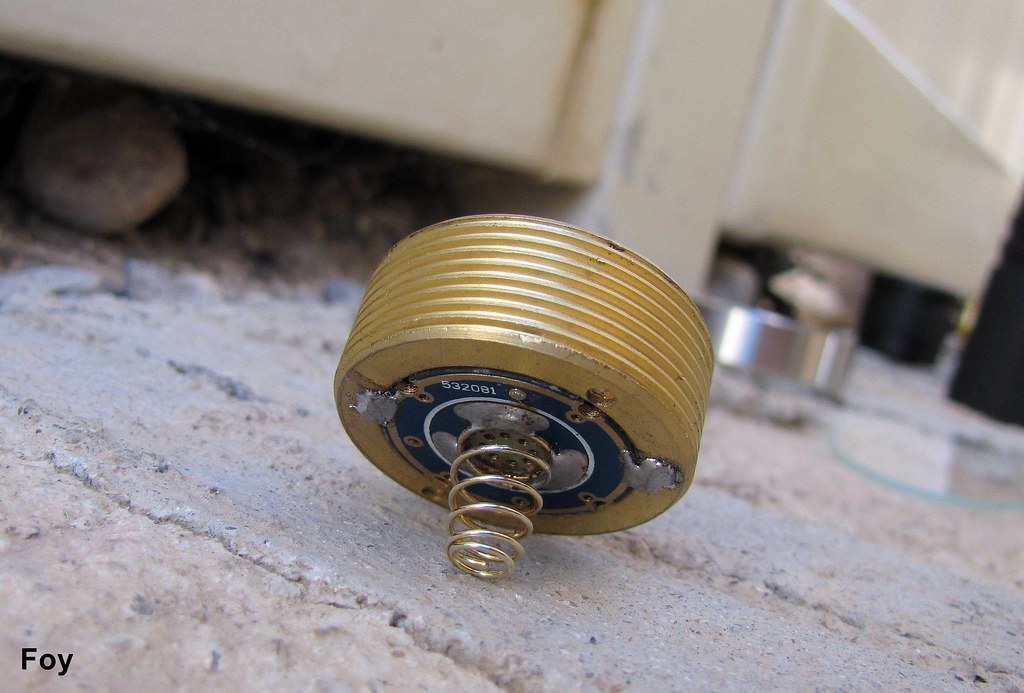
Lots of threads and they are cut thick and square . . .
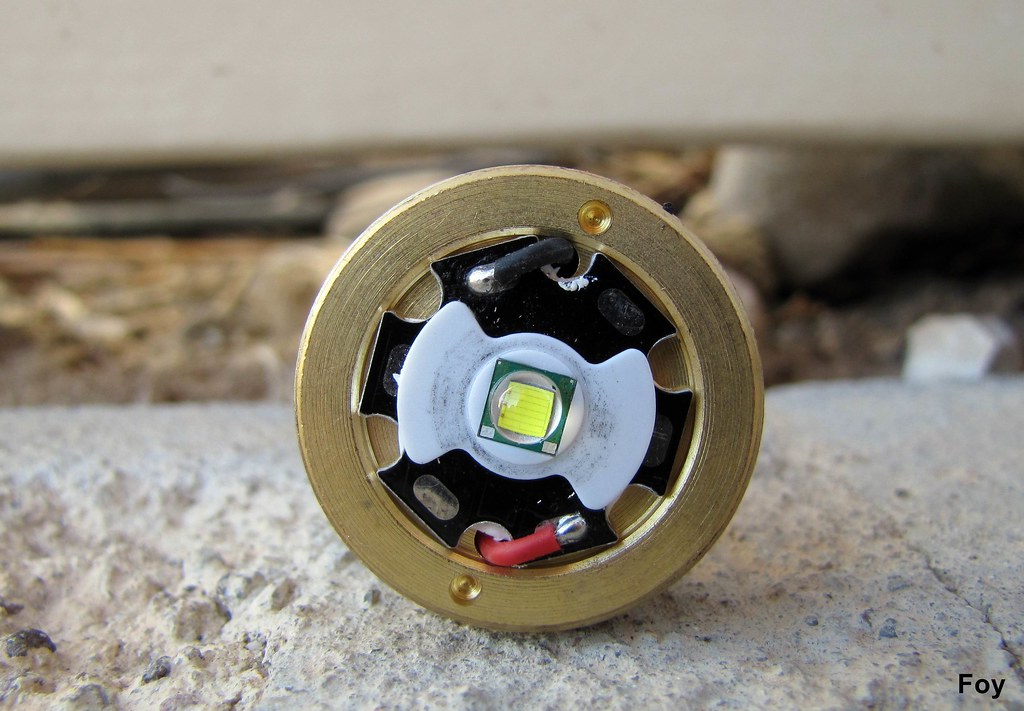
XM-L/U2/1B cool white.
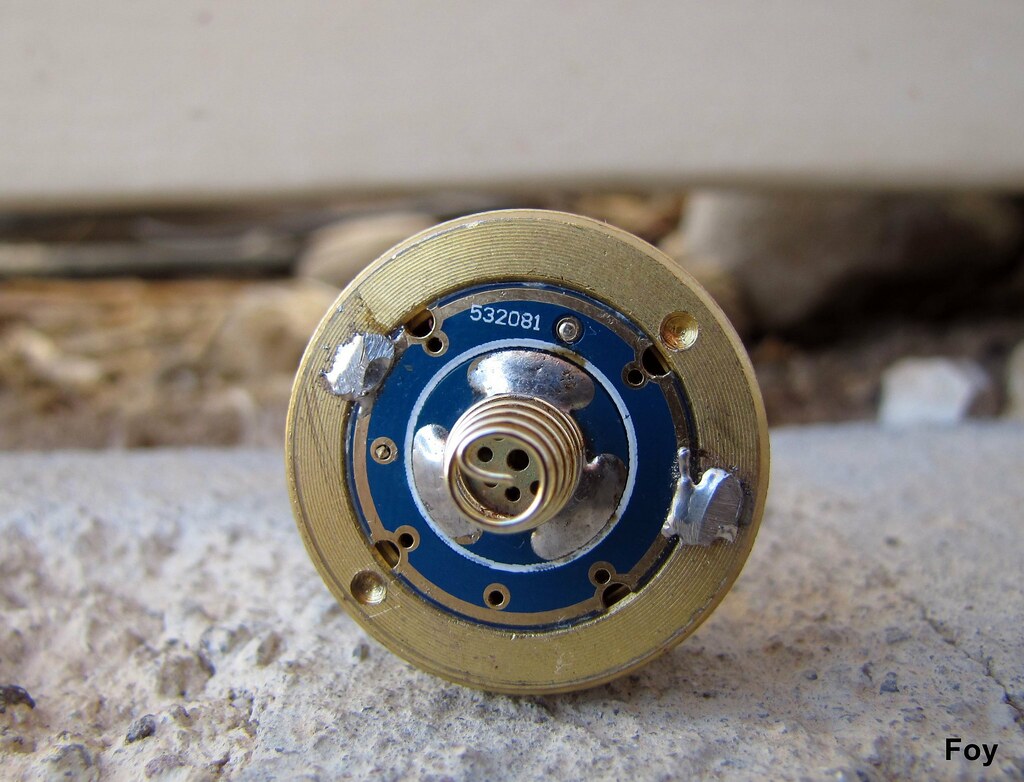
I love how the spring solder is nearly perfectly shaped. Just another nice feeling of quality.
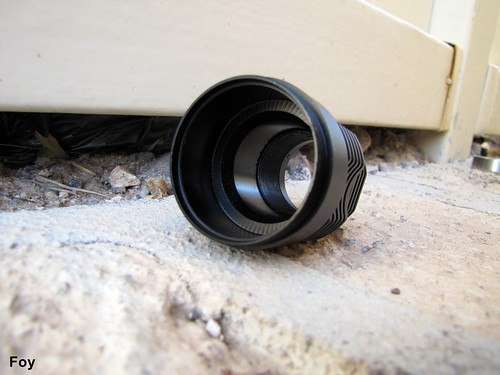


Double O-rings and anodized threads that feel absolutely fantastic.

I also like the cut-out between the lanyard holes.

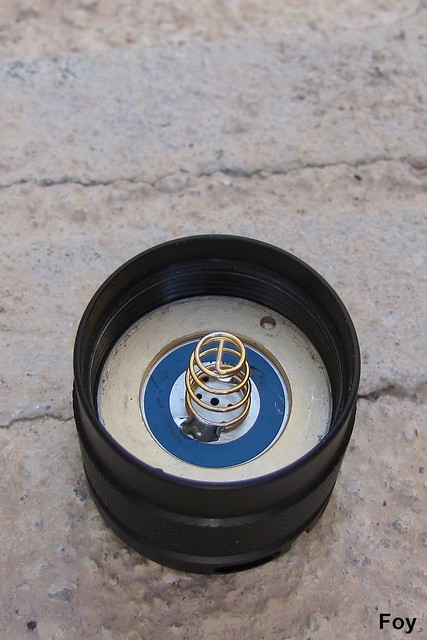
Recessed tail cap switch with 16mm boot. Nothing unusual inside about the switch.

Inconsequential but for the record, small chip in the lens.

The LXP also makes a great looking single cell light . . .
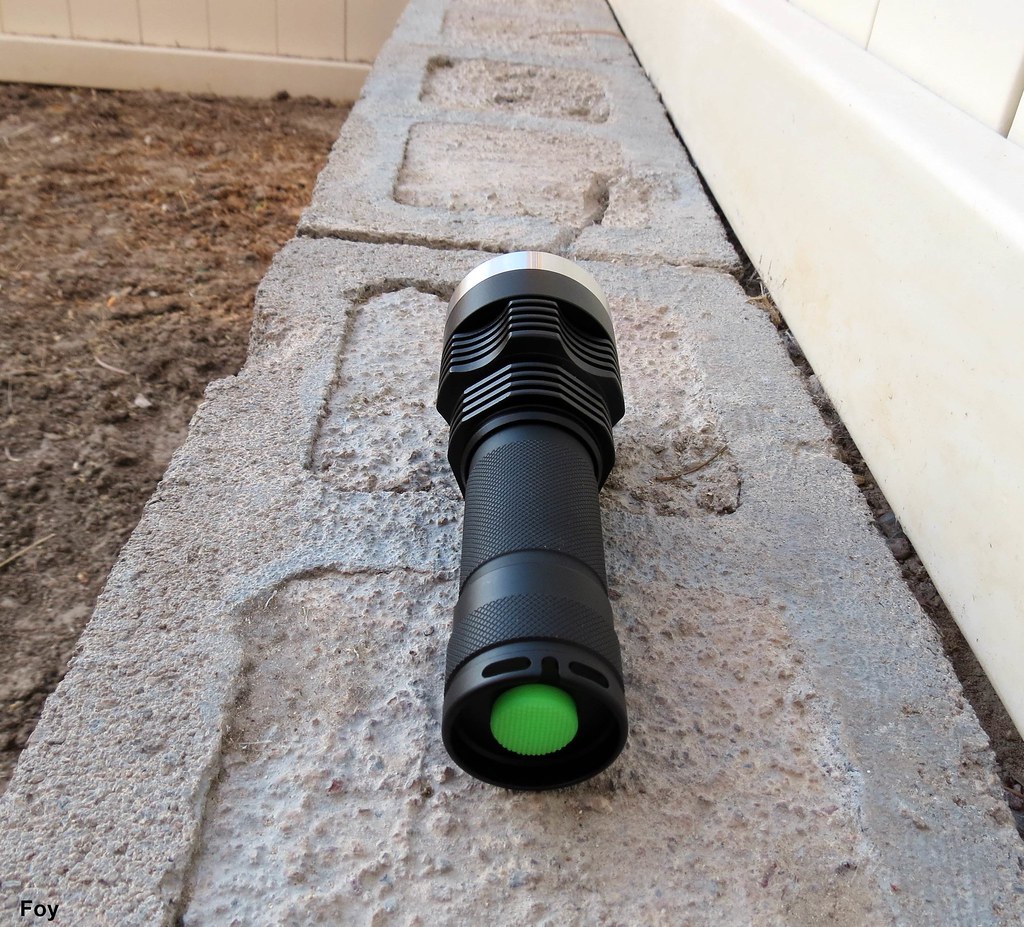
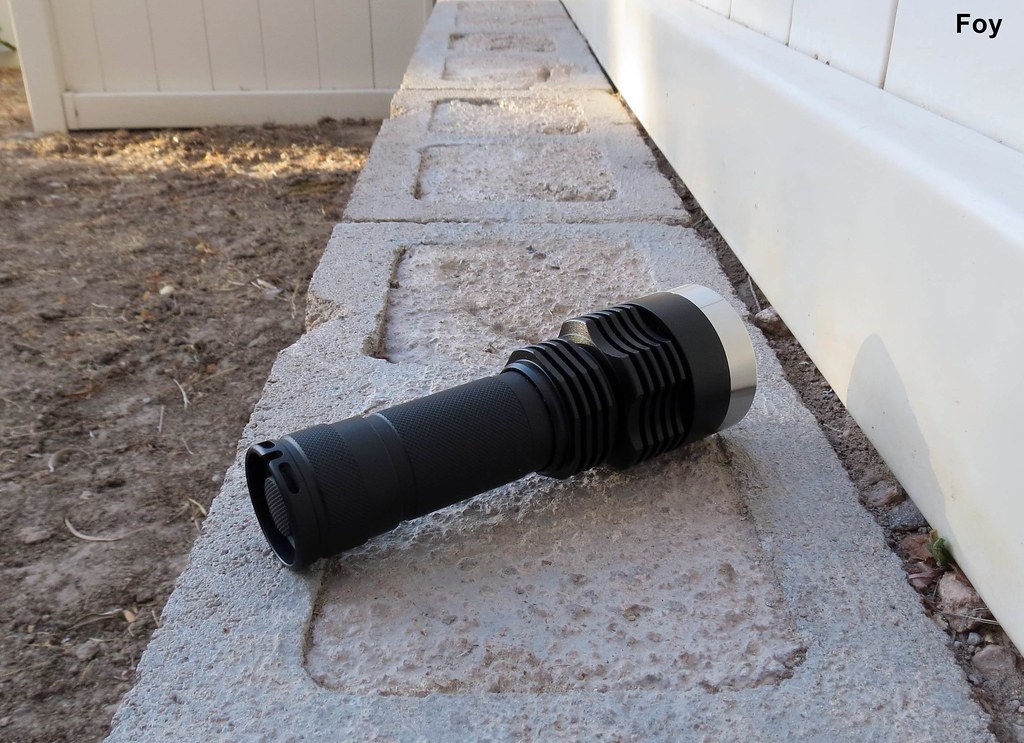

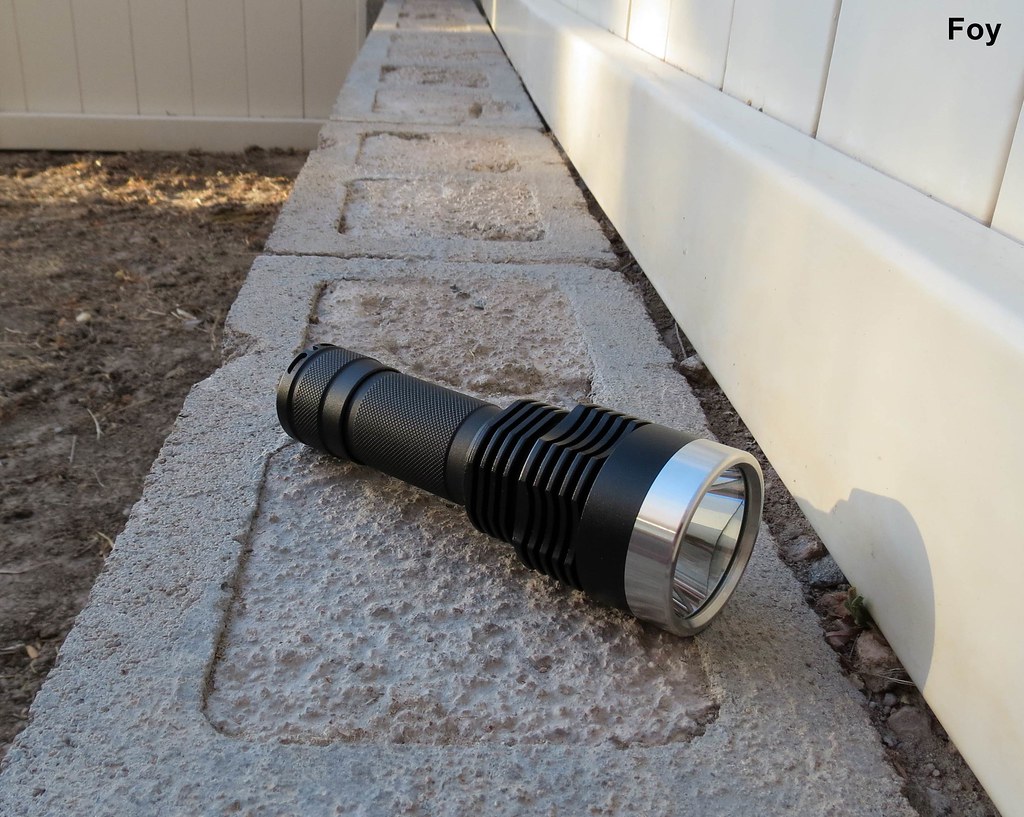
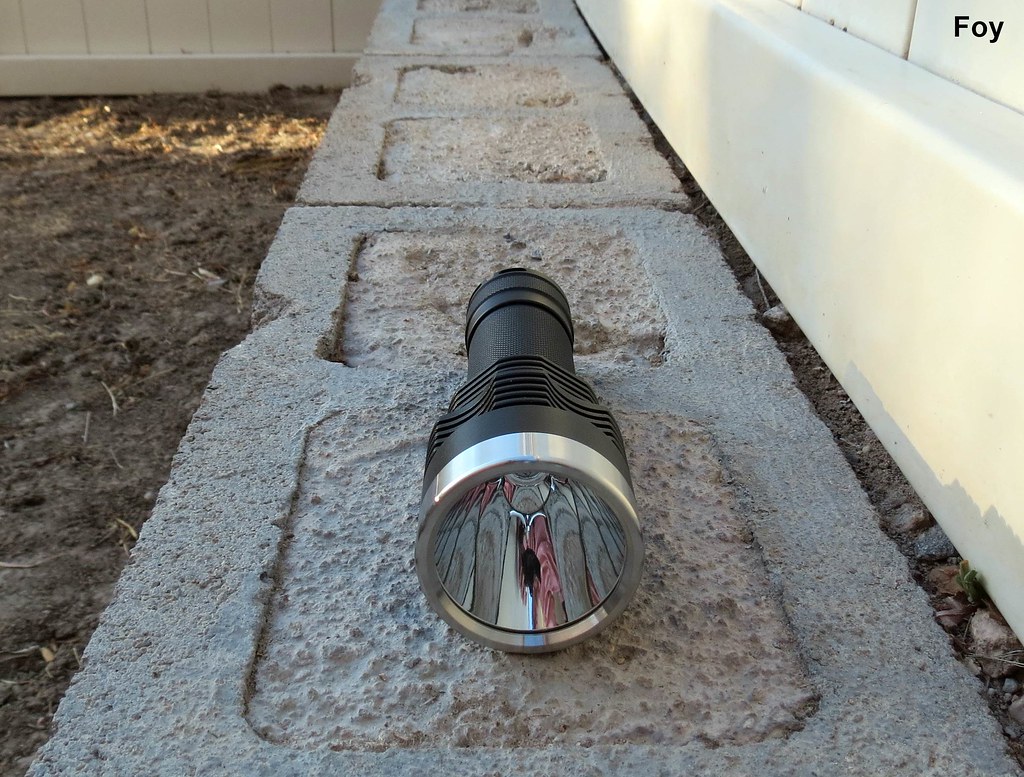
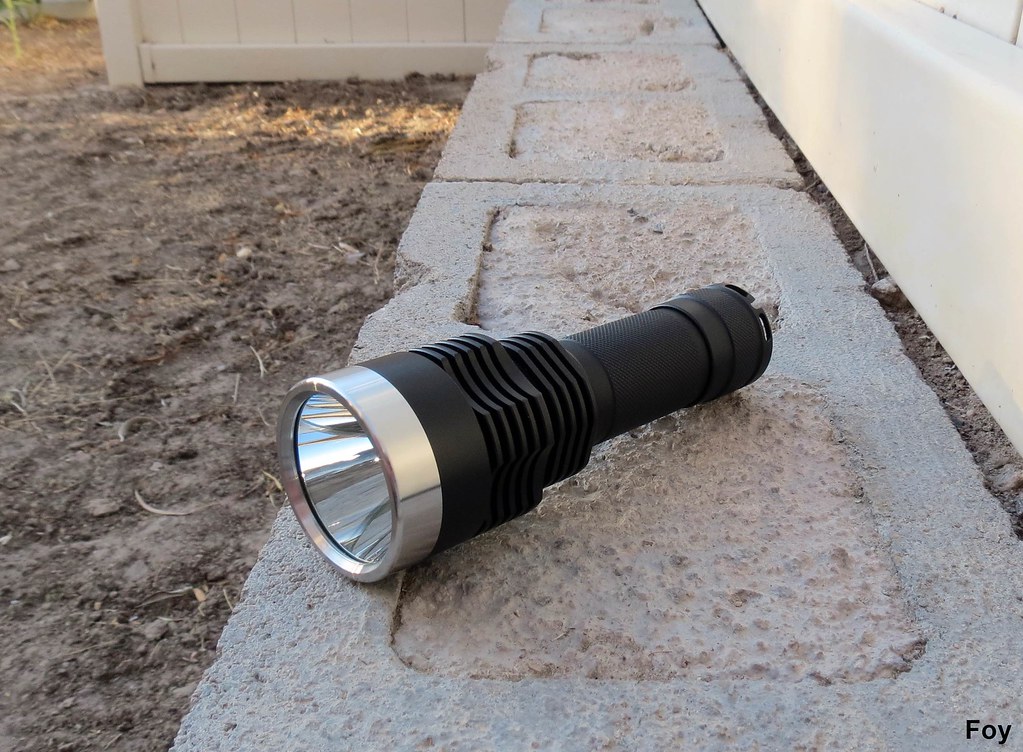
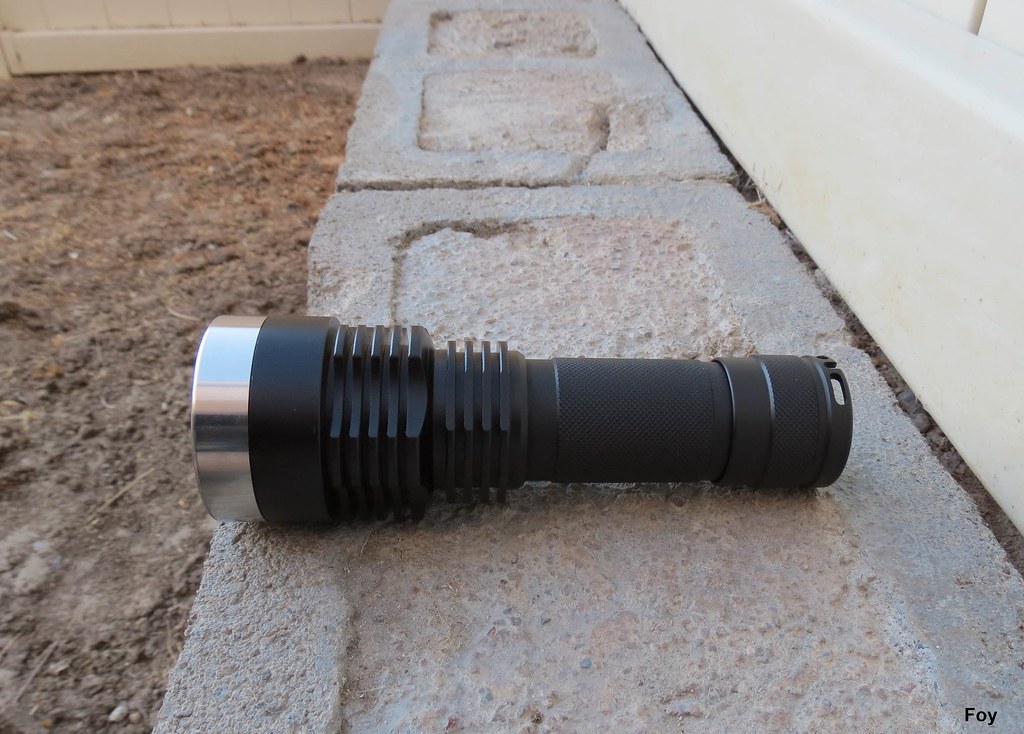
All beam shots were taken with a 1/4 second shutter speed @f2.8.
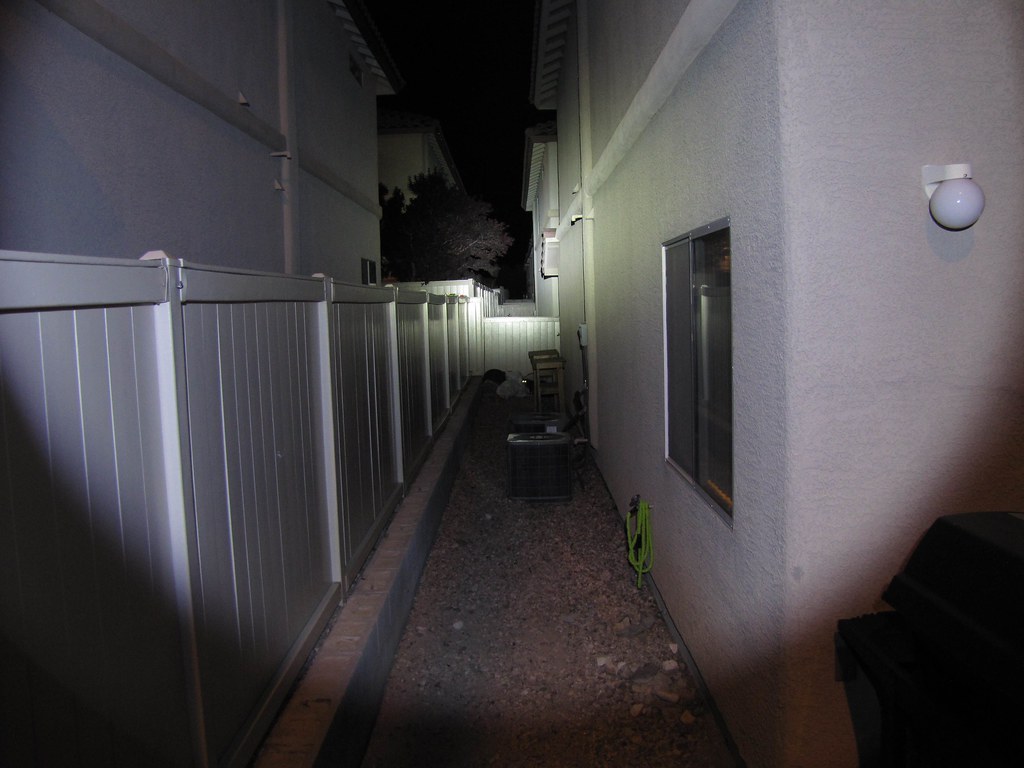
Shadow JM05 with 2 x unprotected King Kong 26650.
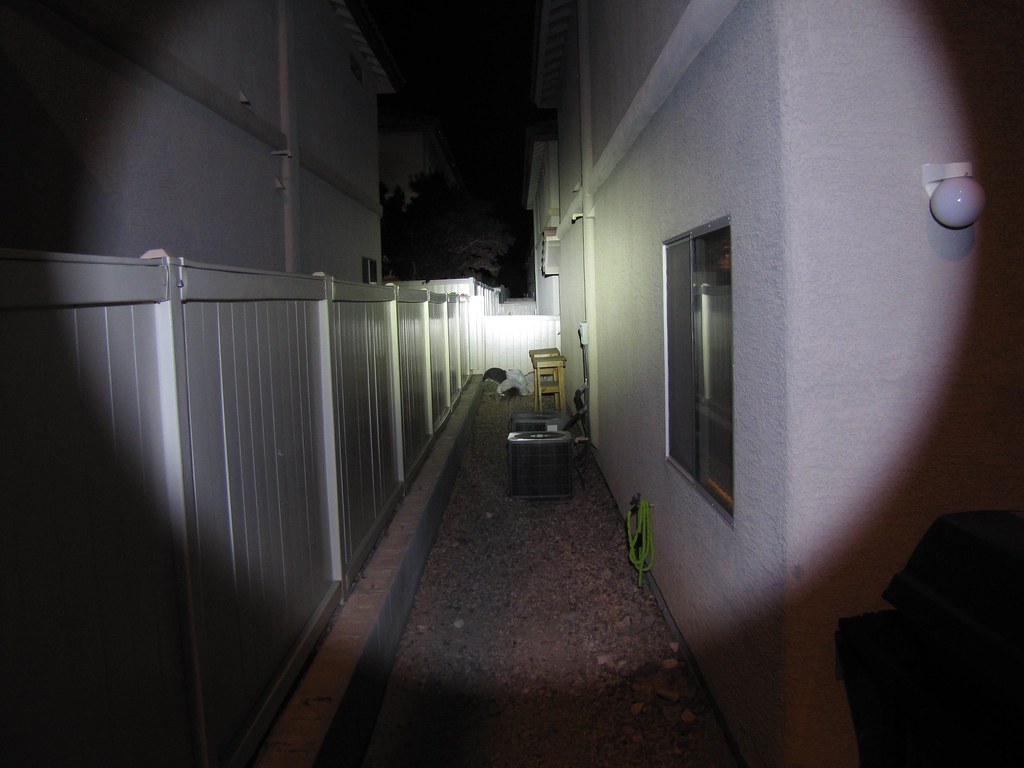
LXP with 2 x unprotected King Kong 26650.

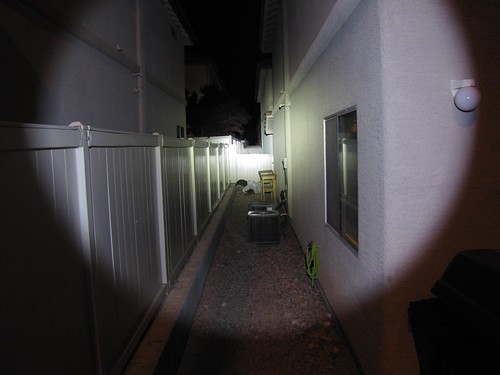
JM05 on the left and LXP on the right.
This is a great light guys. It has superb machine work, fit and finish and outstanding build quality. A lot of thoughtful extras (big pill, how the reflector seats and reflector cooling fins, solder quality, double O-rings, hidden modes) make this an upmarket light in my opinion. Mode memory function is nearly perfect, it is bright as all heck and it throws with some of the big dawgs. Although not a bargain, I do think it is worth its $54 asking price.
You won't be disappointed; of that I am certain.
beamshotstonightFoy

